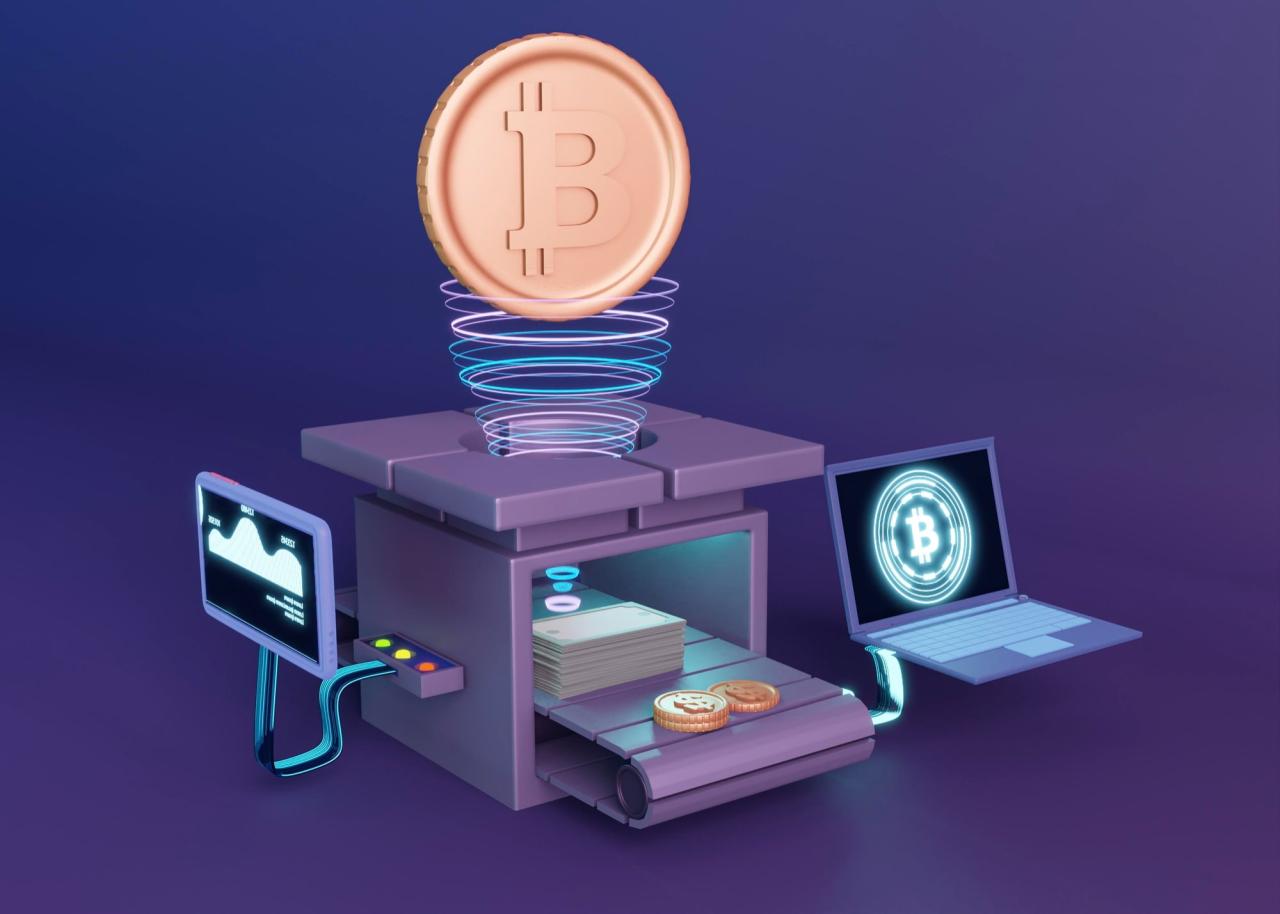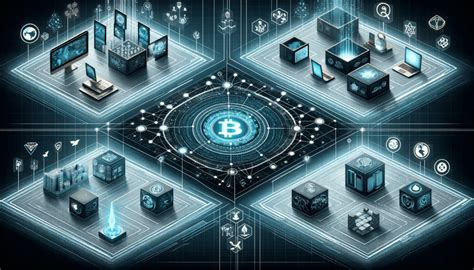The word “blockchain” often conjures images of Bitcoin and volatile cryptocurrency markets. However, to confine blockchain to digital currencies alone is akin to describing the internet solely as an email system. The underlying technology of blockchain—a decentralized, distributed, and immutable ledger—possesses a revolutionary potential that extends far beyond the financial realm. Its unique properties, which ensure transparency, security, and tamper-proof record-keeping, are poised to redefine how industries operate, how data is managed, and how trust is established in an increasingly digital world. For businesses, innovators, and content creators aiming to capitalize on high-value, trending topics for SEO and Google AdSense revenue, understanding blockchain’s broader applications is no longer optional; it’s essential for navigating the future of technology and commerce. This comprehensive article will delve deep into the core mechanics of blockchain, explore its transformative potential across diverse sectors, and illuminate the challenges and opportunities that lie ahead as this groundbreaking technology continues to mature.
Deciphering Blockchain: The Core Mechanics
At its heart, a blockchain is fundamentally a distributed database. What sets it apart from traditional databases are its defining characteristics: decentralization, immutability, transparency (within its design parameters), and cryptographic security.
A. Distributed Ledger Technology (DLT)
Instead of a central server or authority maintaining a single copy of a ledger (like a bank’s record of transactions), a blockchain distributes copies of this ledger across a vast network of computers, known as nodes.
- Decentralization: No single entity controls the entire network. Each node holds a full copy of the ledger. This eliminates single points of failure and enhances resilience against attacks or censorship. If one node goes offline, the network continues to operate.
- Consensus Mechanisms: For a new block of transactions to be added to the chain, the majority of nodes in the network must agree on its validity. This “agreement” is achieved through various consensus mechanisms, such as:
- Proof of Work (PoW): (Used by Bitcoin, Ethereum 1.0) Nodes (miners) compete to solve complex mathematical puzzles. The first to solve it gets to add the new block and is rewarded. This is energy-intensive but highly secure.
- Proof of Stake (PoS): (Used by Ethereum 2.0, Solana) Validators are chosen to create new blocks based on the amount of cryptocurrency they “stake” as collateral. This is more energy-efficient.
- Delegated Proof of Stake (DPoS), Proof of Authority (PoA), etc.: Variations designed for different use cases, often balancing decentralization with speed and scalability.
B. Blocks and Chains: The Structural Integrity
The “blockchain” name comes from its structure: a growing list of records, called blocks, that are linked together using cryptography.
- Blocks: Each block contains a batch of validated transactions (e.g., cryptocurrency transfers, data records, smart contract executions). It also includes a timestamp and a cryptographic hash of the previous block.
- Chaining: The hash of the previous block acts as a digital fingerprint, securely linking one block to the next. If any data in an older block is altered, its hash changes, breaking the chain and invalidating all subsequent blocks. This creates the property of immutability.
- Immutability: Once a transaction is recorded on a blockchain and confirmed, it’s virtually impossible to alter or delete it. This provides an unparalleled level of data integrity and auditability.
- Transparency and Pseudonymity: While transactions are publicly visible on the distributed ledger (transparency), the identities of the participants are typically pseudonymous (represented by cryptographic addresses, not personal names), offering a degree of privacy.
C. Cryptography: The Guardian of Security
Advanced cryptographic techniques are fundamental to blockchain’s security model.
- Hashing: A cryptographic hash function takes an input (data from a block) and produces a fixed-size string of characters (the hash). Even a tiny change in the input data results in a completely different hash, making tampering immediately detectable.
- Digital Signatures: Participants use private and public key pairs. A private key is like a secret password used to sign transactions, proving ownership. A public key is used to verify the signature without revealing the private key. This ensures transaction authenticity and non-repudiation.
D. Smart Contracts: Code That Executes Itself
Beyond simply recording data, many modern blockchains, notably Ethereum, support smart contracts.
- Self-Executing Code: Smart contracts are self-executing agreements with the terms of the agreement directly written into lines of code. They run on the blockchain network, eliminating the need for intermediaries.
- Automation and Trust: Once deployed, smart contracts automatically execute when predetermined conditions are met, without human intervention or interpretation. This brings unprecedented levels of automation, trust, and efficiency to agreements and processes.
- Programmable Transactions: This capability extends blockchain beyond simple value transfers to complex logic and decentralized applications (dApps).
Transformative Applications: Blockchain Beyond Finance
While its origins are in financial transactions, blockchain’s core characteristics—trustlessness, transparency, immutability, and decentralization—make it a powerful solution for a myriad of challenges across virtually every industry.
A. Supply Chain Management and Provenance
One of the most promising applications is in creating transparent and traceable supply chains.
- End-to-End Visibility: Blockchain can record every step of a product’s journey from raw material to consumer, including origin, manufacturing details, shipping, and handling.
- Authenticity and Anti-Counterfeiting: Consumers can verify the authenticity of products, crucial for luxury goods, pharmaceuticals, and food. QR codes linked to blockchain records allow instant verification.
- Ethical Sourcing: Companies can prove ethical sourcing of materials (e.g., conflict-free minerals, sustainably harvested timber), responding to consumer demand and regulatory pressures.
- Recall Efficiency: In case of contamination or defects, affected batches can be quickly identified and recalled, minimizing damage and risk.
- Food Safety: Tracking food items from farm to fork can pinpoint sources of contamination rapidly during outbreaks.
B. Healthcare and Medical Records
Blockchain offers solutions for managing sensitive patient data with enhanced security and patient control.
- Secure and Interoperable Records: Patient medical records can be stored on a blockchain, giving patients control over who accesses their data. It can also facilitate secure sharing between healthcare providers, regardless of their systems, improving care coordination.
- Drug Traceability: Preventing counterfeit drugs from entering the supply chain and ensuring the authenticity of medications.
- Clinical Trials: Enhancing transparency and integrity in clinical trial data management, ensuring data immutability and preventing tampering.
- Patient Data Management: Empowering patients with ownership of their health data, allowing them to grant or revoke access as needed.
- Insurance Claims: Streamlining and automating insurance claim processing through smart contracts, reducing fraud and processing times.
C. Digital Identity and Privacy
Blockchain can revolutionize how digital identities are managed, giving individuals more control over their personal data.
- Self-Sovereign Identity (SSI): Individuals own and control their digital identities, granting access to specific verified credentials (e.g., driver’s license, degree) without revealing unnecessary personal information.
- Secure Authentication: Replacing traditional password-based systems with more secure, cryptographic authentication methods.
- Eliminating Centralized Data Breaches: By decentralizing identity data, the risk of massive data breaches from central repositories is significantly reduced.
- Voting Systems: Creating more transparent, verifiable, and secure digital voting systems, reducing the potential for fraud and increasing public trust.
D. Real Estate and Property Management
The slow, paper-heavy, and often opaque processes in real estate are ripe for blockchain disruption.
- Immutable Land Registries: Creating tamper-proof records of property ownership, reducing fraud, and speeding up transfers.
- Fractional Ownership: Enabling fractional ownership of real estate through tokenization, making property investment more accessible.
- Automated Property Transfers: Smart contracts can automate parts of the transfer process, reducing the need for intermediaries like lawyers and escrow agents.
- Mortgage Processing: Streamlining mortgage applications and approvals, reducing costs and time.
E. Intellectual Property and Copyright Management
Protecting digital content and creators’ rights.
- Timestamping and Provenance: Artists, musicians, and writers can timestamp their creations on a blockchain, providing undeniable proof of ownership and creation date.
- Royalty Distribution: Smart contracts can automate royalty payments to artists, songwriters, and publishers, ensuring fair and timely compensation across complex distribution networks.
- Digital Rights Management (DRM): Creating transparent and enforceable rules for how digital content can be accessed, used, and shared.
F. Energy and Utilities
Optimizing energy grids and promoting decentralized energy trading.
- Peer-to-Peer Energy Trading: Allowing homeowners with solar panels to sell excess energy directly to neighbors via a blockchain-enabled microgrid, without a central utility intermediary.
- Carbon Credit Trading: Creating transparent and verifiable marketplaces for carbon credits, ensuring authenticity and preventing double-counting.
- Smart Grid Management: Enhancing the security and efficiency of smart grids through decentralized control and data sharing.
G. Gaming and Metaverse
Building truly player-owned economies and digital worlds.
- True Digital Ownership (NFTs): Players can truly own in-game assets (skins, weapons, land) as non-fungible tokens (NFTs) on a blockchain, which they can buy, sell, or trade outside the game’s ecosystem.
- Play-to-Earn Models: Blockchain enables new gaming models where players can earn real-world value through gameplay.
- Decentralized Virtual Worlds: Building entire metaverse platforms where ownership, governance, and value transfer are managed by blockchain.
H. Decentralized Autonomous Organizations (DAOs)
A new organizational structure enabled by blockchain and smart contracts.
- Community Governance: DAOs are organizations governed by code and community consensus, rather than a central authority. Decisions are made by token holders voting on proposals.
- Transparency and Efficiency: All treasury funds and voting records are transparent on the blockchain, and rules are enforced automatically by smart contracts.
- New Models of Collaboration: DAOs enable new forms of collective action and resource allocation without traditional hierarchical structures.
Challenges and Considerations for Widespread Blockchain Adoption

Despite its immense potential, blockchain technology faces significant hurdles that must be addressed for truly widespread adoption beyond niche applications.
A. Scalability
Current public blockchains (like Bitcoin or Ethereum) struggle with processing a high volume of transactions per second compared to traditional centralized systems (e.g., Visa).
- Throughput Limitations: Bitcoin processes ~7 transactions/second (TPS), Ethereum ~15-30 TPS, while Visa handles thousands. For global applications, much higher TPS is needed.
- Solutions Under Development:
- Layer 2 Solutions: (e.g., Lightning Network for Bitcoin, Optimism/Arbitrum for Ethereum) Process transactions off-chain and then record the final state on the main chain, significantly increasing speed.
- Sharding: Dividing the blockchain into smaller, manageable pieces (shards) that can process transactions in parallel.
- Alternative Consensus Mechanisms: PoS and other mechanisms are generally faster than PoW.
B. Energy Consumption (for PoW)
Proof of Work (PoW) consensus mechanisms, notably Bitcoin’s, consume enormous amounts of energy, raising environmental concerns.
- Environmental Impact: Bitcoin’s energy consumption rivals that of small countries.
- Shift to PoS: Many newer blockchains and upgrades (like Ethereum’s move to PoS) are designed to be vastly more energy-efficient, mitigating this concern.
C. Regulatory Uncertainty
Governments globally are still grappling with how to regulate blockchain and cryptocurrencies.
- Lack of Clear Frameworks: This creates uncertainty for businesses and investors, hindering innovation and adoption.
- Varying Global Approaches: Different countries adopt different stances, making international operations complex.
- Need for Harmonization: Calls for clearer, more consistent global regulatory frameworks are growing.
D. Interoperability
Different blockchains often operate in isolation, making it difficult for them to communicate or exchange data with each other.
- Siloed Networks: Lack of seamless communication between, for example, Bitcoin and Ethereum, or between different enterprise blockchains.
- Cross-Chain Solutions: Projects are developing bridges, atomic swaps, and other protocols to enable interoperability, allowing assets and data to flow between chains.
E. User Experience (UX)
Interacting with blockchain technology can be complex and intimidating for average users.
- Complexity of Wallets and Keys: Managing private keys, seed phrases, and understanding gas fees can be overwhelming.
- Steep Learning Curve: New users face a significant learning curve to understand fundamental concepts.
- Improved User Interfaces: Developers are working on more intuitive interfaces and abstracting away the underlying blockchain complexities.
F. Data Privacy
While transparent, the immutability of public blockchains can pose privacy challenges, as data is permanently recorded.
- Publicly Verifiable: All transactions on a public blockchain are auditable by anyone.
- Zero-Knowledge Proofs (ZKPs): Cryptographic techniques like ZKPs are being developed to allow verification of information without revealing the underlying data, offering enhanced privacy.
- Permissioned Blockchains: For enterprise use cases, private or permissioned blockchains offer more control over data visibility, balancing transparency with privacy needs.
G. Integration with Legacy Systems
Many industries rely on decades-old legacy IT systems, making the integration of new blockchain solutions a significant technical and logistical challenge.
- Complexity and Cost: Integrating blockchain with existing infrastructure can be expensive and complex, requiring specialized expertise.
- Resistance to Change: Established organizations may be hesitant to overhaul their tried-and-true systems.
The Future of Blockchain: A Decentralized Tomorrow

Despite the challenges, the trajectory of blockchain technology points towards a future where its principles of decentralization, transparency, and immutability underpin a vast array of global systems. We are witnessing a maturation phase, moving from speculative hype to practical, real-world applications.
- Enterprise Adoption: More large corporations will pilot and implement blockchain solutions for supply chain, identity, and data management.
- Government Integration: Governments will explore blockchain for public services, land registries, voting, and digital identity.
- Interoperability Breakthroughs: Solutions for seamless communication between different blockchains will become more robust, fostering a truly interconnected Web3.
- Sustainable Blockchains: The industry will continue its shift towards more energy-efficient consensus mechanisms.
- Enhanced User Experience: Developers will prioritize user-friendly interfaces, making blockchain applications accessible to a broader audience, much like the early internet evolved from command-line interfaces to graphical user interfaces.
- Regulatory Clarity: As governments gain a deeper understanding, clearer and more harmonized regulatory frameworks will emerge, fostering responsible innovation.
Blockchain is not just a technological advancement; it’s a paradigm shift towards a more transparent, efficient, and equitable digital infrastructure. Its ability to create trust in trustless environments unlocks unprecedented opportunities for innovation across every sector.
The Unfolding Potential of Decentralized Trust
The initial association of blockchain solely with cryptocurrencies, while historically significant, barely scratches the surface of its profound capabilities. As a decentralized, immutable, and cryptographically secured ledger, blockchain represents a foundational shift in how we manage data, establish trust, and organize industries. From revolutionizing the transparency and authenticity of global supply chains and securing sensitive medical records, to empowering self-sovereign digital identities and fostering new models of organizational governance through DAOs, its applications are vast and transformative.
While significant hurdles remain—particularly concerning scalability, regulatory clarity, and user experience—the relentless pace of innovation suggests these challenges are being actively addressed. The ongoing evolution towards more energy-efficient protocols, enhanced interoperability, and intuitive user interfaces indicates a future where blockchain technology seamlessly integrates into our daily lives, often operating silently in the background, yet fundamentally reshaping our interactions with digital systems and real-world assets. For forward-thinking businesses and individuals, understanding this technology isn’t just about staying current; it’s about recognizing the building blocks of a more secure, transparent, and decentralized future economy. Embracing the true potential of blockchain beyond its crypto origins is key to unlocking its power to create trust, foster efficiency, and drive unprecedented innovation across every imaginable sector, making it an ever-green, high-value topic for online content and digital advertising.











